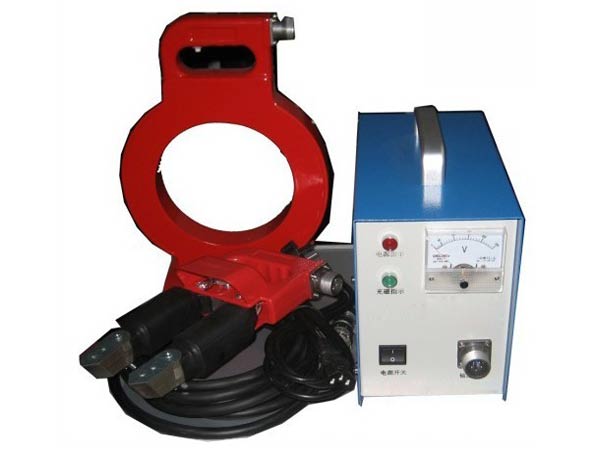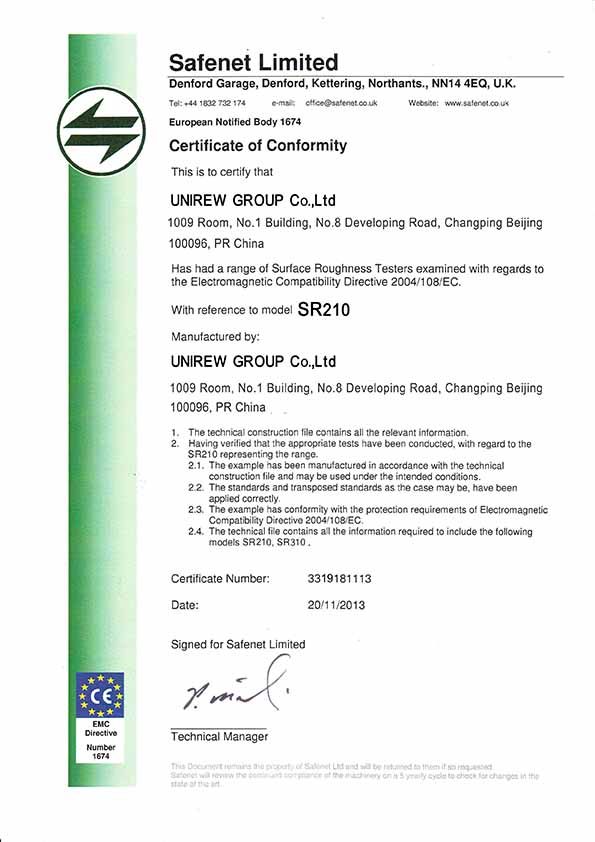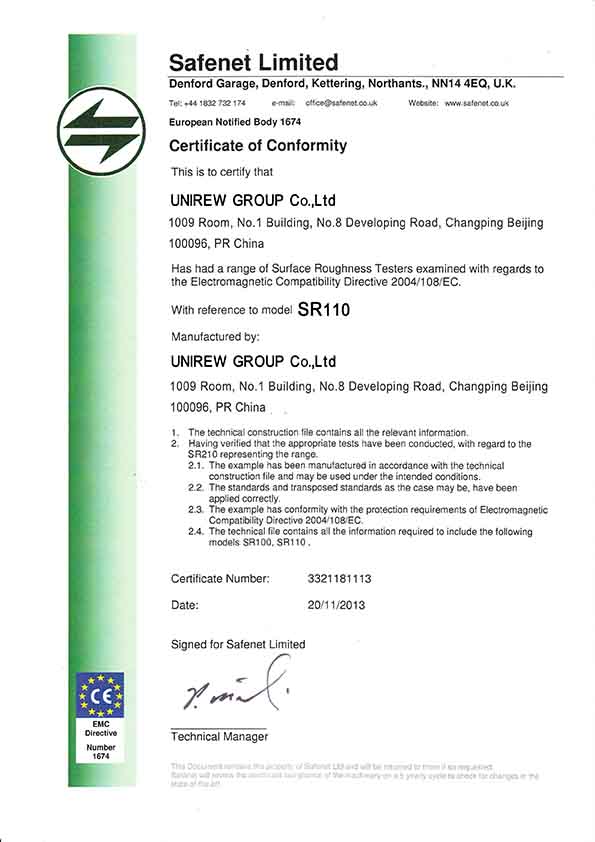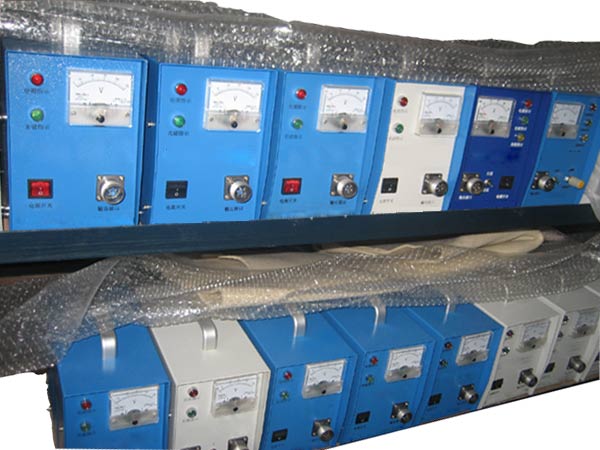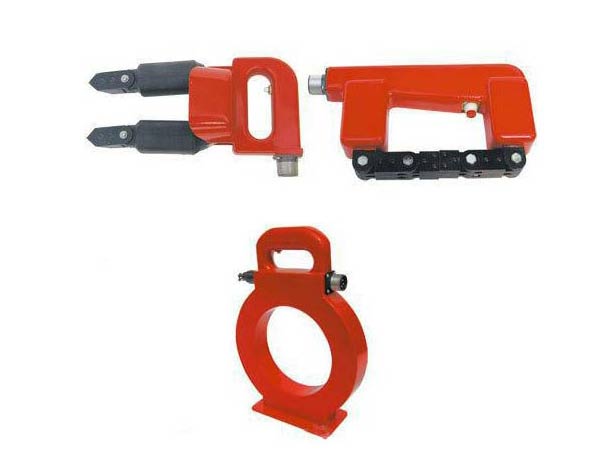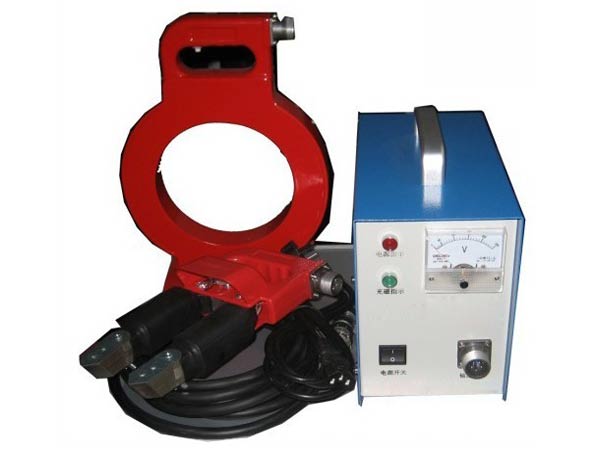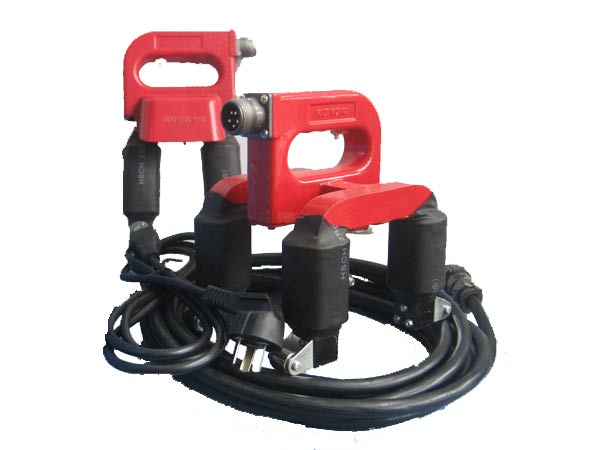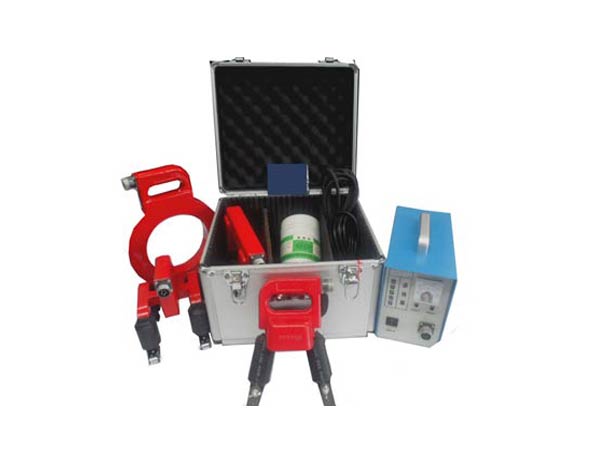Detailed Product Description
I. Brief Description
MPT-3 magnetic-particle detector is a new type magnetic particle fault localization equipment designed and produced by UNIREW GROUP independently after utilizing the advantages of its counterparts at home and abroad. Magnetization by additional magnetic field renders the detector small in size and light in weight. Highly integrated circuit makes one device perform all the functions of several ones.
Selection of functions:
►A type probe:
Also named horseshoe magnetic yoke probe or fillet weld probe, turning joint angular magnetic head, which is fitted with a working lamp and is especially suitable for fault detection of work pieces with abnormal face and complicated shape. Polar distance: 20-160㎜;lifting power: AC≥5㎏,DC≥18㎏;weight : 1㎏. The equipment made by using this probe is referred to as horseshoe magnetic yoke detector or fillet weld detector. The probe finds wide application as it uses the turning joint.
►D type probe:
Also called electromagnetic yoke probe with various turning joints and great magnetization strength. Polar distance:60-220㎜; lifting power: AC≥7㎏,DC≥18㎏; weight: 1.6㎏.The equipment made by using this probe independently is named electromagnetic yoke detector and the probe is featured by high magnetic inductivity and great magnetization strength.
►E type probe:
Also called cross magnetic yoke probe or rotating-field probe and can conduct omnibearing combination magnetization flaw detection at a time. The running roller and working lamp can increase the fault detection speed. Polar distance: 110㎜,lifting power: AC≥9㎏ and weight:2㎏. The equipment made by using this probe independently is called rotating-field fault detector, which uses two cross magnetic yokes and AC move-phase technology to produce a synthetic rotating field that varies with time for omnibearing combination magnetization of a work piece at a time. The fault detection is done quickly with highinspection quality.
►O type probe:
Also called ring probe with an internal diameter of 150㎜ and center field ≥180Oe.Weight:3㎏.The equipment made by using this probe independently is named ring
fault detector. It is designed on the principle of forming a strong magnetic field by energizing a coil and is suitable for sectional fault detection or demangnetization of complicated work pieces including axles, bars, pipes and vanes.
II. Technical performance
1. Power source: AC 220V ±10% 50HZ 5A
2. Output: AC 36V10A Probes of A.D.E.O can be selected for fitting.
3. Fault detection speed: ≥6 m/ m
4. Temperature rise of probe: ≤60℃
5. Operating beat: It is suggested that in continuous long-time operation magnetization time ≤3 s and off time≥5 s
6. Weight of the detector: ~6.6Kg
III. Operation and maintenance
This operation guide should be read carefully before use of this detector so that you may know its structure and technical performance well. Check if the power is in conformity with the requirements for the detector and connection is correct. Only when no error is found can the power may be switched on. For the first use or reuse after a long suspension check if the instrument is in good shape.
1. Operating procedures
(1)The power plug cord is connected to the socket of the instrument and the probe is connected to the output socket properly.
(2)When external power is switched on, the indicator lamp will flash, the control circuit will also be closed and the servo begins to work.
(3)With good contact of the probe with the work piece to be detected, the switch on the probe is pressed. Then the work piece will be magnetized by the instrument with the work lamp flashing. When the switch is released, the main loop power will be cut off and the work piece won’t be magnetized.
(4)If the detector is not in use, the switch should be turned off to cut off the power.
2. Trouble shooting
(1)For no indication of energization, non-operation or blown fuse, short circuit oroverload may be the cause.
(2)The probe works after the switch is pressed, but no work indication is seen. The indicator lamp is out of order.
(3)The indicator lamp is on, but the probe doesn’t magnetize. The main circuit or control circuit fails.
(4) If power is switched on, magnetism is charged without pressing the switch. The control circuit or bilateral silicon-controlled switch may be broken.
IV. Cautions
(1)Operating beat of the instrument: It is suggested that in continuous long-time operation magnetization time ≤3 s and off time≥5 s
(2)Before use check if the voltage meets the requirements for the instrument as excessively high or low tension will damage the instrument or affect fault detection.
(3) In operation the end face of the probe should be in good contact with the work piece to be detected before pressing the magnetization switch and then best magnetization effect will be achieved.
(4) The detector is equipped with sound no-load and over-current protective circuit, but it should not be operated under no load to reduce unnecessary temperature rise.
(5) The detector can work continuously. If partial overheating is found, it should be suspended from use. Reuse is possible after the cause is ascertained.
(6) The detector and its accessories should be used or kept in a clean, dry and anticorrosive environment.
(7) When repairing by yourself, watch out for the high-voltage danger in the machine.
(8) Power switch should not be turned on or off after the magnetization switch is pressed.
(9) The casing of the instrument must be earthed reliably.
(10) The instrument should be returned to our service center if the circuit fault is not repairable.
